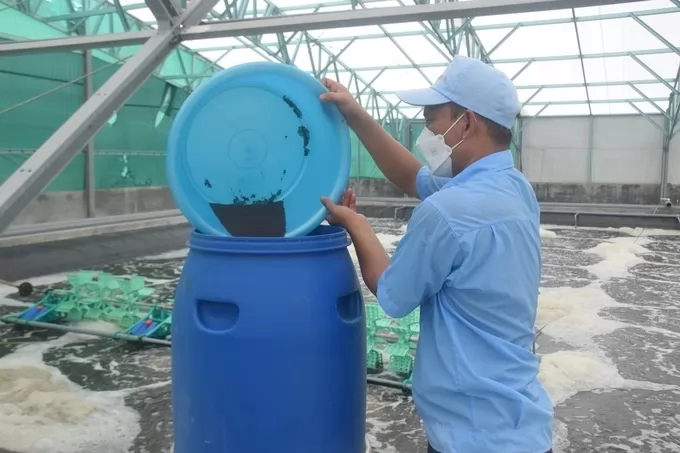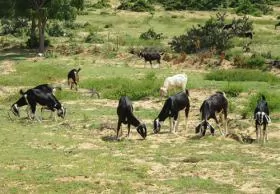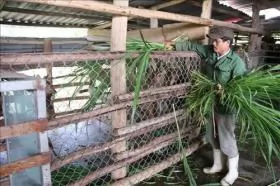Mekong district seeks to expand giant barb farming

Caption: A pond for breeding giant barbs in Giồng Riềng District’s Hòa Hưng Commune in Kiên Giang Province. – VNA/VNS Photo Hồng Đạt
KIÊN GIANG – Giồng Riềng District in Kiên Giang Province is expanding a breeding model for cá hô, or the giant barb, that offers farmers high incomes.
Several farmers have been breeding giant barbs in ponds and using commercially produced feed for them under a pilot model in the district’s Hòa Hưng Commune since mid-2017.
It was implemented by the local Agriculture and Rural Development Bureau with support from the province Agriculture Extension Centre.
Participating farmers are provided 60 per cent subsidies for buying fingerlings and 40 per cent for feed for 18 months.
Lưu Thị Liễm said she raised 500 giant barbs in a 500sq.m pond.
Fingerlings cost her VNĐ18,000 (77 US cent) each, she said.
When they are one to three months old, they feed at the bottom of the pond and later at the surface, she said.
The most difficult period in breeding them is until they are three months old, she said.
Each participating farmer breeds 500 giant barbs and harvests more than 1,000 kilogrammes worth of fish after 18 months since they weigh more than 2kg by then, according to the bureau.
Since the fish fetch VNĐ200,000 for a kilogramme, each farmer earns more than VNĐ140 million ($6,000).
Giant barbs are in great demand since they can be made into many unique dishes, including hotpots.
Besides, being among the world’s largest freshwater fish, they can fetch huge prices when they grow large.
Trần Ngọc Khải, head of the bureau, said participating farmers followed set processes at every stage from preparing the ponds and managing their environment to tending the fish.
The district’s agricultural technicians regularly inspect and instruct farmers and help resolve problems in the breeding process, he said.
The district has favourable natural conditions for breeding giant barbs and relevant agencies will help farmers in other communes too breed the fish, according to the bureau.
The fish is endemic to the Mekong River and grow up to 300kg.
In the Mekong Delta, they are normally found in the upper areas of the Hậu River, a tribute of the Mekong.
But their population in the wild has reduced dramatically in the last 10 years.
The National Breeding Centre for Southern Freshwater Aquaculture succeeded in producing giant barbs artificially in 2005.
Now it produces hundreds of thousands of fingerlings every year to supply breeders. – VNS
Maybe you are interested

Ninh Thuận Province finds goat farming lucrative to expand
NINH THUẬN — Ninh Thuận, the largest goat breeding locality in Việt Nam, is expanding its herds as they offer farmers high incomes and it has natural advantages in raising the animals.

Binh Dinh approves the policy to invest in shrimp hi-tech agricultural zone
(VAN) The total investment of Hi-tech Agricultural Park for Shrimp Development Project in My Thanh commune (Phu My district, Binh Dinh) is over VND 1,498 billion.

Deer farming lucrative in south
Viet Nam News / HCM CITY - Breeding deer to harvest their antler velvet, the soft skin that grows on top, is enabling farmers in Bà Rịa - Vũng Tàu Province's Xuyên Mộc District earn a steady income.





